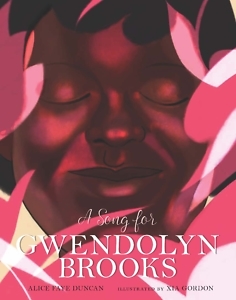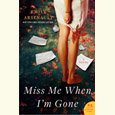Gwendolyn Blooms
In her new picture book, Alice Faye Duncan pays tribute to the legendary Gwendolyn Brooks
In her newest picture book, A Song for Gwendolyn Brooks, Memphis children’s author and school librarian Alice Faye Duncan pays tribute to celebrated poet Gwendolyn Brooks, the first African American to win a Pulitzer Prize for literature and the twenty-ninth poet laureate of the United States.
 In an original, nine-part free-verse poem, with illustrations by Brooklyn artist Xia Gordon, Duncan asks readers to “sing a song for Gwendolyn Brooks.” She frames the story with Brooks as a metaphorical flower, struggling to grow but eventually finding the sunlight of confidence. Observant readers will spot lines from one of Brooks’s poems on the title-page spread: “The time cracks into furious flower. Lifts its face all unashamed.”
In an original, nine-part free-verse poem, with illustrations by Brooklyn artist Xia Gordon, Duncan asks readers to “sing a song for Gwendolyn Brooks.” She frames the story with Brooks as a metaphorical flower, struggling to grow but eventually finding the sunlight of confidence. Observant readers will spot lines from one of Brooks’s poems on the title-page spread: “The time cracks into furious flower. Lifts its face all unashamed.”
A Song for Gwendolyn Brooks moves from this first appearance of young Gwendolyn, age eight, as she ponders a dying flower, to the final spread in which her parents celebrate her Pulitzer Prize: “They praise her shine,” Duncan writes. “They saw it first.”
She takes readers through Brooks’s childhood in Chicago’s South Side (her head “filled with snappy rhymes”), emphasizing the poet’s natural introversion and solitude on the school playground. Instead of joining in, Gwendolyn merely observes, though always with a well-worn notebook in hand. Her parents even allow her to abandon her chores, giving her more free time for writing.
 Nevertheless, the future Pulitzer-winner struggles to believe in herself—she “doubts her radiance,” as Duncan describes it—and even buries in her back yard the poems she deems inadequate. When an elementary-school teacher accuses her of plagiarizing, she composes a poem on the spot. The poem, “Forgive and Forget,” is reprinted in its entirety in A Song for Gwendolyn Brooks. Three of Brooks’s other poems are incorporated into the text as well.
Nevertheless, the future Pulitzer-winner struggles to believe in herself—she “doubts her radiance,” as Duncan describes it—and even buries in her back yard the poems she deems inadequate. When an elementary-school teacher accuses her of plagiarizing, she composes a poem on the spot. The poem, “Forgive and Forget,” is reprinted in its entirety in A Song for Gwendolyn Brooks. Three of Brooks’s other poems are incorporated into the text as well.
With vivid figurative language—“She is feathery voice and flickering flame” and “Her words are psalms from a South Side Street”—Duncan also shines a light on Brooks’s creative process, the crafting of poetry itself. One spread at the book’s midway point is devoted to the work involved in going from a shoddy first draft to a polished final one. This emphasis on revision is something to which young students can relate and makes this an especially inviting biography to share in a language-arts or creative-writing classroom.
With her parents’ continued support (“This girl we got is a gifted child,” her father tells her mother ), Gwendolyn befriends fellow African American poets, learns more about her craft, and repeatedly wins first place in magazine poetry contests. After college graduation, marriage, and the birth of her son—the story’s pacing picks up considerably here—she continues writing, deleting, and revising. “She whittles her sonnets with perfect grace,” Duncan writes, and ultimately wins the Pulitzer Prize.
Via uncluttered compositions and unadorned backgrounds, artist Xia Gordon, who makes her picture-book debut here, emphasizes the emotions of Brooks’s childhood. Faces are drawn simply—in the illustration depicting her college graduation, Brooks’s proud, contemplative face is the only one with features; her white classmates are shown faceless.
Duncan’s telling of this story is a reverent introduction to Brooks’s life, a book that captures the poet’s essence. A timeline, list of suggested books, and a bibliography follow the story, expanding on Brooks’s accomplishments and her abundant talent for readers who crave more information. Young writers eager to bloom as poets themselves will find particular inspiration here.

Julie Danielson, a former school librarian, blogs at Seven Impossible Things Before Breakfast and writes about picture books for Kirkus Reviews, BookPage, and the Horn Book. Her first book, Wild Things! Acts of Mischief in Children’s Literature, is now out in paperback.


